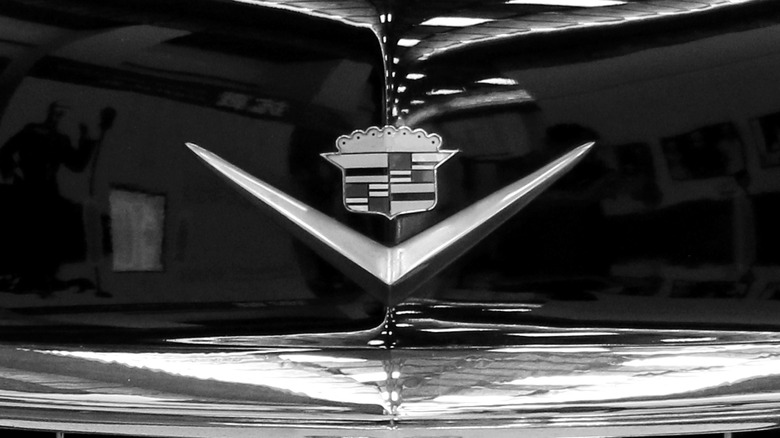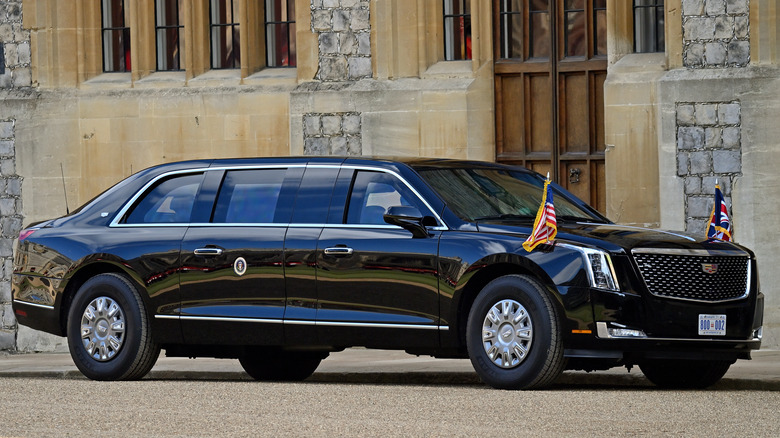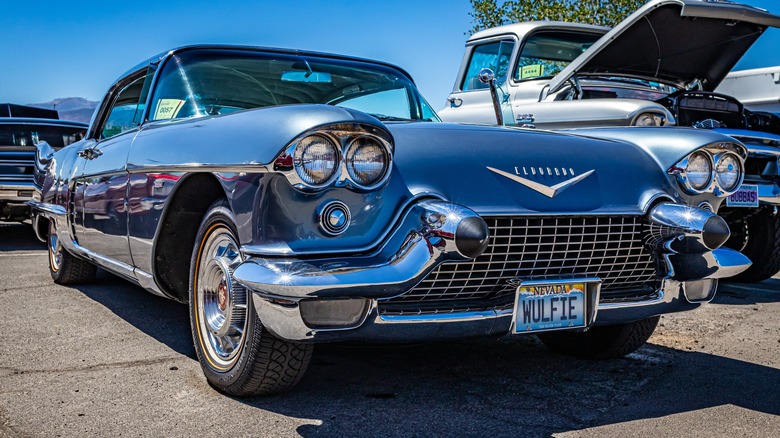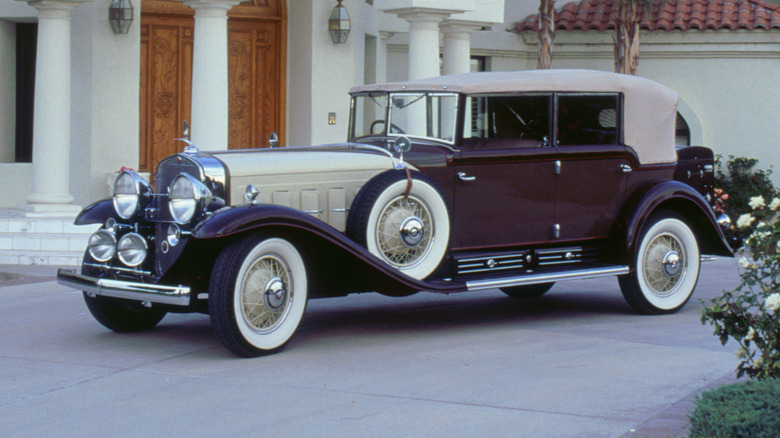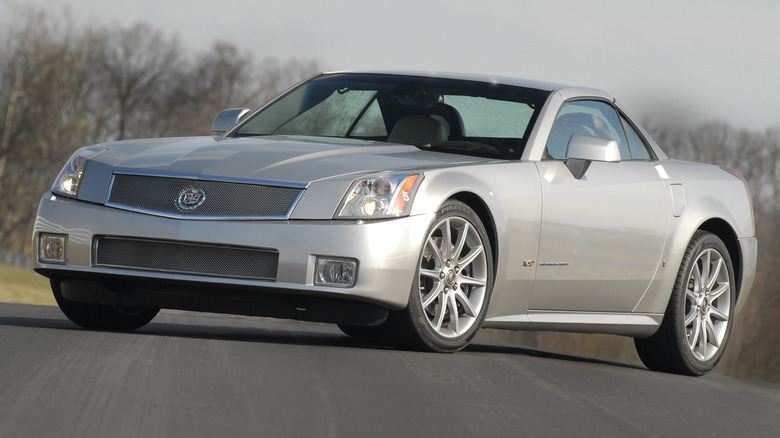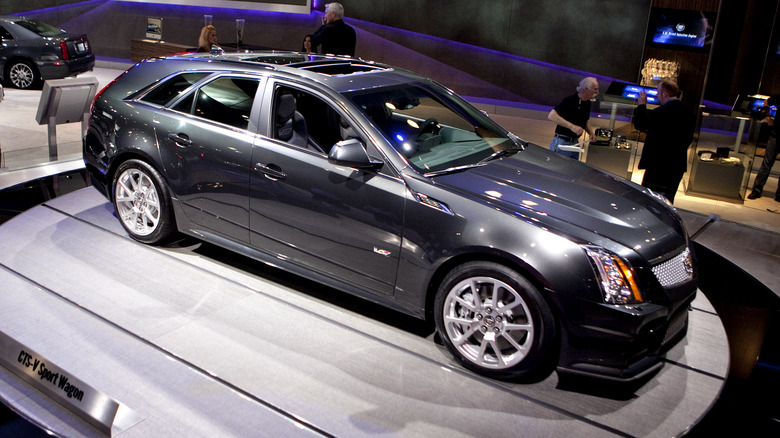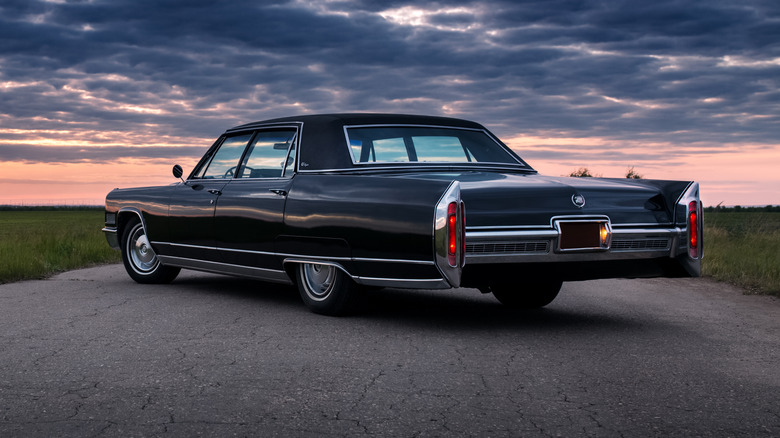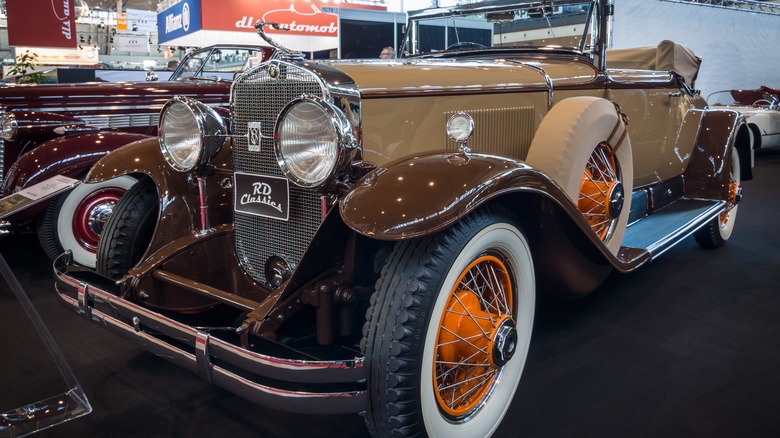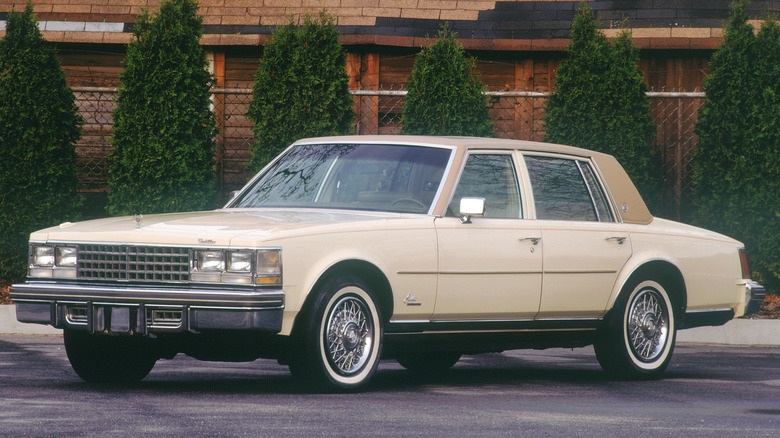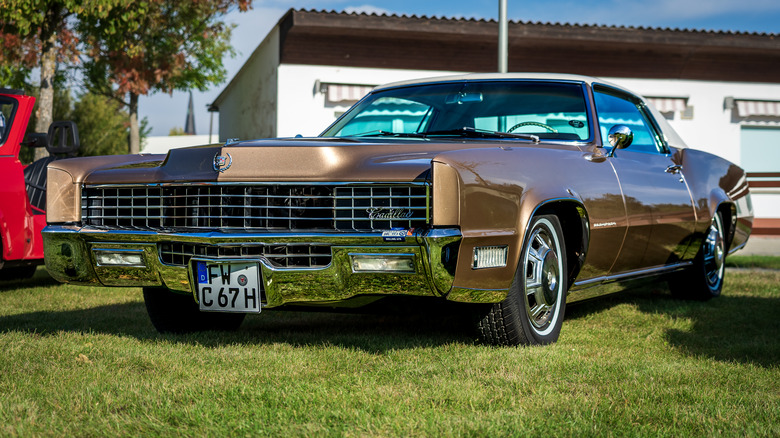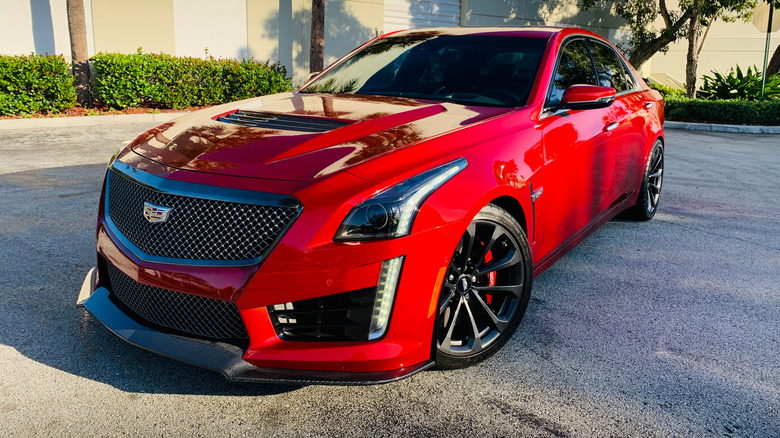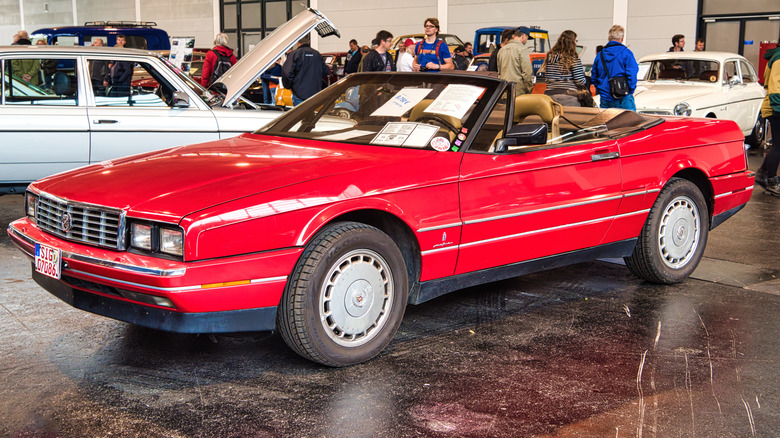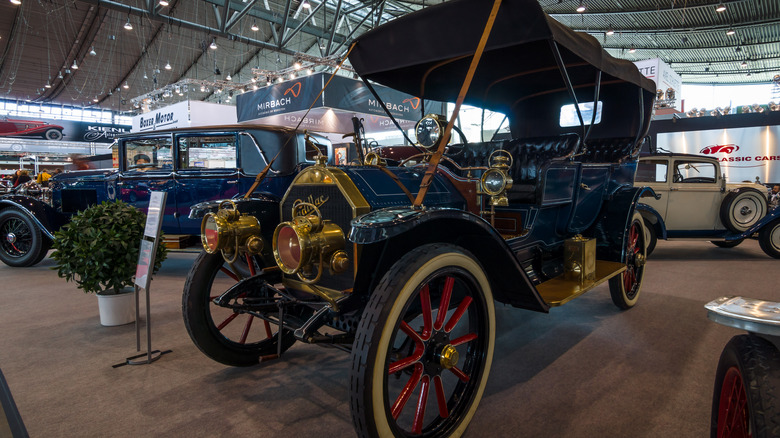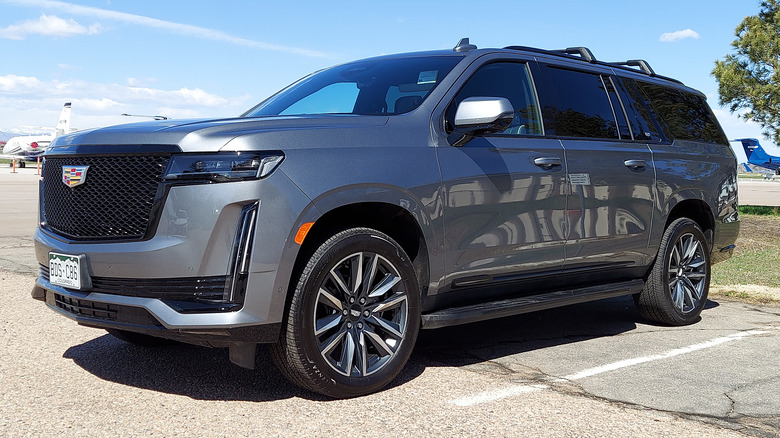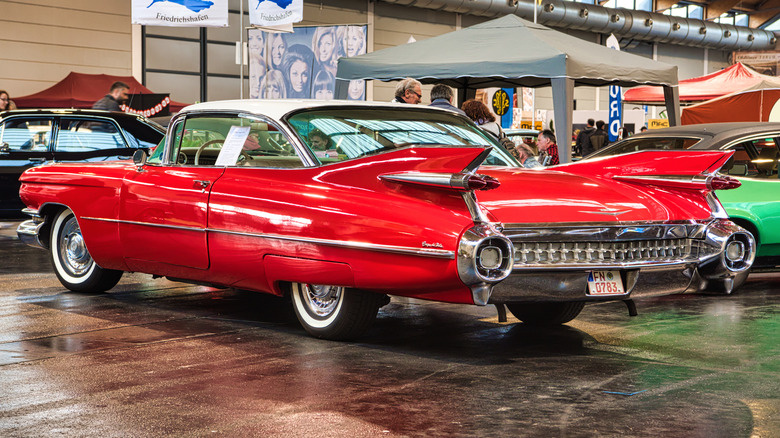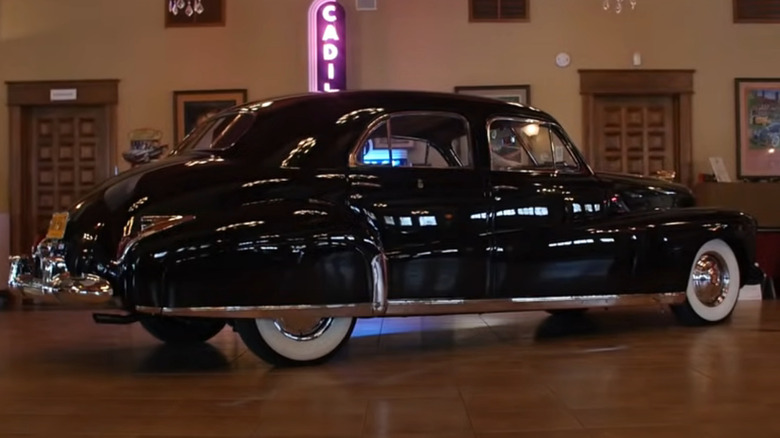The 15 Best Cadillacs Of All Time
Cadillac has a long and storied history full of American ingenuity and opulence. Started by the man who would later found its primary rival, Henry Leland, Cadillac would go on to be a company known for technological innovations and luxury. Its early years were spent making hand-built precision-engineered bespoke automobiles and later became a part of General Motors, sitting atop the brand hierarchy as its flagship marque.
Cadillac styling has always been distinctive and its cars have always been instantly recognizable, particularly in the post-war period. Synonymous with its distinctive style is Cadillac girth, as its cars have also been among the largest vehicles on the road for many years. Cadillac is not immune from folly, as it has made some mistakes along the way. The Cadillac V8-6-4 was particularly bad, and the badge-engineered Cimarron was also a low point. However, Cadillac is replete with successes and these are the 15 best of them since 1902.
The Beast
Presidential limousines have a history that stretches back as far as the auto industry itself. Taft was the first president to have official White House automobiles, which included a White Steamer, a Baker Electric, and Pierce-Arrows, according to Autoweek. Presidents have since then ridden in Lincolns, Packards, Chryslers, and Cadillacs, including the current POTUS.
President Biden rides in a highly modified Cadillac that was put into service in 2018. General Motors has had the contract to build special vehicles for the president since the Clinton era, and the current one, commonly referred to as the Beast, is a wholly unique vehicle. To start, it shares no structure or body panels with any production Cadillac and is most likely riding on the chassis of a GMC heavy truck like the Kodiak or Topkick. Details of the car are heavily guarded secrets of the Secret Service. However, some details are known about it. According to Motor Biscuit, it has an on-board fire suppression system, advanced digital communications, hermetically sealed climate system, Kevlar-reinforced tires, bullet-proof glass, armored doors, and probably weighs about 22,000 pounds. It is essentially a military-grade transport in Cadillac guise.
Other details of the car will never be known as retired presidential vehicles are destroyed to protect security details, except for those saved for museums. Regardless of the secrecy surrounding the Beast, it is an impressive car. And whether it is traveling the streets of Ohio or on a state visit to New Dehli, it demands respect.
Eldorado Brougham
While the Eldorado model has been a regular part of the Cadillac lineup since 1953, the 1957 Eldorado Brougham was totally unrelated, except by name. The Brougham was an exercise in excess. Cadillac made an ultra-exclusive vehicle and loaded it up with as much hand-built luxury as possible, then sold it at a loss. The idea was to bring in customers with the flashy and elegant Brougham and flip them into a car that actually fit their budget.
According to Hemmings, GM chief designer Harley Earl sought to take a few concept car ideas displayed in previous years and implement them into a special car for those who could afford the finer things. He succeeded with the Brougham and some of the extras that came with the car were power everything, including a six-way seat, brushed stainless steel pillarless roof, unique doors that retained the look of a coupe, and a dual four-barrel carburetor 365 cu. in. V8. If Cadillac offered it in 1957, the Brougham got it.
The end result is a beautiful car that stands out even among the flamboyant curves of the cars of the time. GM states that over the two-year period, only 400 cars were sold at a retail price of $13,074, nearly double the price of any other Cadillac in the lineup. Today they are among the most collectible of all Cadillacs and well-kept examples can sell for up to $150,000, such as this one on Bring a Trailer.
Series 452 V-16
In the early days of automaking, engineers had an unlimited amount of learning to do in creating better, more powerful, and more efficient engines. As such, many innovations existed that assisted in boosting power, one of the most sought-after developments. Motor Trend writes that Cadillac had considered supercharging but concerns about reliability nixed it. Other ideas were put on the table but found sacrifices elsewhere that would degrade the refinement desired by management. In the end, more cylinders were decided to be the best way to maximum power while retaining smooth operation.
The 1930 Series 45 that featured the new V16 engine was as luxurious and elegant as it came at the time. And while the large engine had been sought for its power potential, its refinement was just as important and the Series 45 was said to have been about the smoothest and quietest car on the road. The Series 45 was not for everyone, as its list price started at $5,350, or around $86,333 in 2021. The V16 engine was not Cadillac's most powerful and not the largest, but it may have been its most grand engine of all time, and the Series 452 is a fitting car for such an engine.
XLR-V
Cadillac's German competition has had sleek sports coupes in their lineups since the mid-1950s. Cadillac has always been a luxury leader, leaving the performance work to stablemates Chevrolet and Pontiac. The Allante gave Cadillac a foot in the door, though it was still more of a luxury coupe than a true sports car. This changed with the introduction of the XLR and the high-performance XLR-V in 2004.
Built on the same chassis as the Corvette, the XLR-V showed consumers that Cadillac was serious about delivering a true sports car that handled better than its boat-like lineup, with performance to match. Car and Driver tested it in 2006 and noted it's a reasonably good car for what it is. It boasts a low noise level and it stays firmly planted to where you point it. The Northstar V8, very different from the Corvette it is based on, pumps out 443 horsepower, and the cabin is well-appointed with a long list of accessories and options. That said, the car cost $100,000, steep for some. Motor1 describes it as the "worst sports car." That may be a bit unfair, but they assert that for the princely sum the car should perform better than the Corvette. But speed isn't everything and it is indeed a nice luxury sports coupe.
The XLR is not going to be everything to everyone, but it is the first true sports car from Cadillac and that places it among their best.
CTS-V Wagon
Cadillac's styling modernized in the early 21st Century, breaking away from its traditional styling for a more European flair with its new Art and Science design language.
The CTS was the first model to adopt the new design and naming system when it debuted in 2003. It was situated toward the bottom of the hierarchy as the entry-level Caddy with a retail price just below $30,000. As Cadillac developed its new style and modernized its entire fleet, the company also dipped its toes into the sports sedan market long dominated by the Germans. Several years after releasing the CTS-V sports sedan, GM announced the inclusion of a CTS-V wagon in 2010 for the 2011 model year. It offered a 556-horsepower supercharged 6.2 liter V8 with a six-speed manual or automatic transmission. It was adorned with leather and Alcantara in the interior and on special Recaro seats along with a healthy amount of Cadillac's Obsidian Black sleek and shiny interior panels.
For reasons unknown, devoted enthusiasts of modern cars have a particular taste for wagons, especially if they are fast. Audi and Mercedes have offered fast wagons for years, but they are somewhat rare in the US and fast American wagons are near non-existent. SlashGear found it to be every bit as good as a BMW M-car, if not better. Because of this, the values of this particular Cadillac at auctions on Bring a Trailer have topped $80,000.
1971-1976 Fleetwood Brougham
Modern Cadillacs are efficient machines that are designed much in line with the competition and are competitive options in many markets. This was not always the case. Early Cadillacs focused on being the most opulent cars available for the buyers who could afford to spend extra for elegance. After the war, American highways and American suburbs went on a growth spurt and American cars followed suit. The cars followed suit so much that by the mid-70s, many vehicles on the road resembled river barges on wheels. Cadillac was among the worst offenders.
In 1975, the Cadillac Fleetwood Series 75 reached an astonishing length. Automobile Catalog lists its official length at 233.7 inches, or 19.5 feet. It is a giant car with trunk space to rival the hauling capacity of many small trucks. Its seats are large and supremely comfortable and the upholstery on them is akin to having little pillows cushioning your back and rear throughout your every drive. The interior is appointed in a uniquely American style of luxury. Along with the padded seats is a healthy amount of wood or faux wood inserts and extra lighting on the doors and ceiling. Cadillacs in that era offered cruise control, intermittent wipers, air conditioning, and not much more. They were large and comfortable and they showed to every other driver on the road that you had made it and your giant Cadillac is a statement of that.
1929 Series 341-B
Cadillac has a strong history of innovation. Inventions such as its electric starter continue to be relevant to the modern-day. In 1929, Cadillac released a model with another change hidden beneath layers of metal that would be nearly as consequential as the electric starter, the syncro-mesh gearbox. Before 1929, transmissions in cars were made up of a series of straight cut gears made to slide past one another to fix the input and output shaft on a number of set gear ratios, generally three.
The problem with these gears is that if they were not spinning at the same speed, it was difficult to get them to go together, and shifting gears caused horrid gnashing and grinding noises if the driver was not careful to match speeds and double-clutch gears for smooth shifting. This idea was patented in 1918, but it took until 1929 to get a manufacturer to put it into production. With Cadillac's new syncro-mesh, gear changes can be made smoothly and cleanly without any grinding. It is an innovation that continues to be used in manual transmissions today. It should also be noted that this model was among the first to receive safety glass, according to this auction listing by Sotheby's.
While the Series 341-B is an elegant and luxurious car refined with all the details of an upscale car of its time, its transmission is what makes it a great Cadillac.
1976-1980 Seville
The 1970s gave American automakers accustomed to building large, thirsty cars with massive V8 engines several dilemmas to tackle at once. Oil embargoes created shortages of fuel and emissions regulations created technical hurdles to overcome. And if that were not enough, for Cadillac, German automakers were making inroads in the luxury car market with cars that were already downsized and technologically advanced, offering fuel-injected 4 and 6-cylinder engines with good economy.
In order to fight this, Cadillac created their first down-sized car, the Seville. Developed from the GM X-body, shared by the Chevrolet Nova and Pontiac Ventura, the Seville claimed many upgrades and features that made sure it was strictly upmarket and totally different from its GM cousins. Motor Biscuit notes that the Seville was known as the "international size" Cadillac and that it performed well once introduced to showrooms. It was a smaller car than Cadillac had been making and, curiously, the smaller Cadillac was the top-of-the-range car with the highest sticker price for 1976. Curbside Classic also reveals an oft-forgotten fact about the Seville; it was the first GM vehicle with electronic fuel injection. The Germans had been using mechanical fuel injection for years, and this was a big deal for GM.
This version of the Seville only sold for fours years, and it helped to reshape the future of Cadillac running out of the crises of the seventies and into the modern period of auto manufacture and they are fast becoming desirable collector cars today.
1967-1970 Eldorado
The Eldorado nameplate had been used by Cadillac since 1953 as a moniker for their 2-door vehicles. However, the 1967 model year brought about a radical change in the Eldorado with not only a whole new style, but a novel drivetrain as well. Up until the late 1960s, front-wheel-drive cars had generally been small European or Japanese economy cars driven by tiny engines. The Eldorado was a full-size car with a very large V8 engine driving the front wheels for the first time.
Introduced alongside the Oldsmobile Toronado and Buick Riviera which both shared the same chassis and FWD arrangement, the Eldorado proved to be a successful model for Cadillac. The engineers managed to keep the 429cu. In. V8 mounted longitudinally with the transmission stuffed next to it, linked by a hefty enclosed chain drive. The novel engine arrangement eliminated the transmission tunnel down the center of the car and provided much more legroom for all passengers. Yet, according to Hemmings, automotive reporters of the time praised Cadillac for retaining good driving characteristics. The redesign was so successful the 1967 model year substantially increased sales from the previous year from 2250 to 15680.
The Eldorado would be the first in a long line of FWD Cadillacs. Later Eldorados would come with transversely mounted engines and become smaller along with the rest of the GM fleet. Ironically as most cars on sale today are FWD, Cadillac has none.
CT5-V Blackwing
Cadillac has come a long way from the hand-built cars of Henry Leland and even the giant jet-inspired fin-tailed behemoths of the post-war period. Modern Cadillacs are technologically advanced, supremely comfortable, and good performers. Something that Cadillacs of old could never aspire to be is a sports car. However, with the stiff competition of German sports sedans of the 80s and 90s, GM decided to make a play for that market and catch up. And catch up they did.
The most recent flagship of the Cadillac lineup is the CT5. And like other recent models in the Caddy stable, a V series is available for the CT5. However, this newest one sports a hand-built supercharged 6.2-liter V8 pumping out 668 horsepower, per the automaker. Cadillac had thrown down the gauntlet in the fight for sports sedan dominance. The Blackwing comes standard with a multitude of standard features including lightweight alloy wheels, Brembo brakes, Magnetic Ride Control, plenty of carbon-fiber accents, and a performance recorder engineered in conjugation with Cosworth Engineering.
The Blackwing is an impressive car that is blindingly fast, yet refined and comfortable, as a Cadillac should be. The Germans should take note as this American brute made Car and Driver's 10Best list and our review found little to complain about.
Allante
The late 70s and early 80s were a difficult time for American automakers. Faced with competition from Asia and Europe along with increasing safety and emission regulations, the big three found it hard to keep up with attractive offerings and increasingly looked to unorthodox solutions to survive. Cadillac felt pressure specifically from their German rivals in the luxury market and turned to Europe for help with their new coupe, the Allante.
In order to achieve its goals, Cadillac hired Italian design firm and coachbuilder Pininfarina to not only design their new car, but build it also. When the bodies were completed in Italy, GM used specially fitted Boeing 747 cargo planes to fly the cars back to the Hamtramck, Michigan for final assembly. 1993 was the final year for the Allante and it was also the first Cadillac to be equipped with the Northstar engine. Hemmings states that this engine gave the Allante 295 horsepower, a much-needed increase from the original 170 horsepower 4100 engine in 1987. The interior was a comfortable affair with plush leather throughout and a host of fully modern equipment such as digital dashboards and optional cellular phones.
While the Allante was a promising model, it was not a huge seller. The cost of flying the cars across the Atlantic added significantly to the cost. In the end, Cadillac sold fewer than 4000 cars per year and finally ended production after the 1993 model year.
1912 Model 30
The 1912 Cadillac Model 30 was not unlike the Cadillacs that had come before. Cars of that period did not change drastically from one model year to another, and the bespoke nature of their manufacture and the extraordinarily high price meant common folk could not afford them. However, the Model 30 of 1912 included a revolutionary feature, an electric starter. Before 1912, all cars required a strong arm to hand crank the engines to life, and this often resulted in injury as the hand cranks would kick backward from the regular incidents of backfire during startup.
The story goes, according to the GM Heritage Center, that founder Henry Leland had a friend who stopped to help a damsel in distress get her car started and wound up getting injured. The samaritan later succumbed to his injuries and this prompted Leland to push for an electric starter to be developed for his cars. While the veracity of this story is hard to prove today, it matters little as the starter was made and fitted to the Model 30 in 1912.
The Heritage Center lists the Model 30 with a 4-cylinder engine producing 40 horsepower and it sold new for $1800, or about $48,000 in 2021. Cadillacs were, as always, expensive. Although it was a nice car for its day, not many options existed in that era, except for the "fat man" hinged steering wheel, which happened to be on the right.
Escalade
The first Cadillac Escalade was not a particularly great vehicle as far as Cadillacs go. It was really nothing but a gussied-up GMC Yukon Denali with Cadillac badges and plush leather seats. It had the same engine, the same options, and, really, the same look. But it was the beginning of what would become the standard-bearer for large American SUV luxury. The Lincoln Navigator actually came out first, but, as a status symbol, the Escalade reigns supreme.
1999 saw the first Escalade in the showrooms and, in 2002, the second generation appeared. While the second generation was the first to have distinctive Cadillac styling and interior, the third generation in 2006, as noted in Motor Trend's history of the model, is where the Escalade became the true luxury vehicle as a status symbol as much as luxury transportation. Ever since then, the Escalade has been featured prominently in rap videos as a high roller symbol and became the vehicle of choice for the American executive with the family and golf habit.
This trend has continued until the present day when a fully equipped Escalade will set buyers back more than $100,000 and come packed with seemingly as much high-tech equipment as the F-35 fighter jet. SlashGear's preview of the current model before its sale date lists the impressive amount of tech, including 38 inch OLED screen, AKG premium sound system, and independent rear suspension. It continues to be the luxury king.
1959-1960 Coupe Deville
The 1950s were a time of optimism for the American people. The war was over and new technologies were coming out every day. The jet age had arrived and with it, jet-inspired design. Nowhere was that more prevalent than in the tail fins of auto designers. Several carmakers began raising the tops of the rear quarter panels well above the trunk line into what became known as tail fins, and the trend almost got out of hand before it finally dies.
The National Museum of American History actually credits Cadillac with starting the trend in 1948, when modest bumps resembling fins appeared above the taillights. Then, due to planned obsolescence, Cadillac revised and raised the tail fins each year in an attempt to lure more buyers away from their old and outdated model for a brand new one with bigger fins, but not much different underneath. Hagerty writer Don Sherman recounts the story of the tailfin and the sort of battle that ensued among automakers and proclaims Cadillac the clear winner with the tallest tailfins of any car in 1959.
Trends come and go in automotive design. Some of them make a return. It is doubtful that fins will return and that means that the Cadillac Coupe Deville will likely forever have the largest tailfins of them all.
1941 Series 62 limousine The Duchess
In 1936, Prince Edward, Duke of Windsor, ascended to the throne of England, becoming Edward VIII. However, the young king was single at the time and had already developed somewhat of a relationship with American divorcee Wallis Simpson. The king was so madly in love that he chose to abdicate the throne in order to marry Simpson as it was unacceptable in English high society for a king to marry such a person (via Britannica).
After leaving the Crown to his successor, he and Simpson spent much time in New York where the royal couple eschewed the Rolls Royce or Bentley typical of s member of the royal family for a Cadillac limousine custom built by GM. The car was based on a 1941 Series 62 and extensively customized with the kind of opulent luxury one would expect for a Duke. According to Robb Report, "The Duchess" was hand-built in almost every way. The sheet metal was crafted by hand and matched no other Cadillac while the interior was filled with upholstered monograms, custom walnut panels, and thick wool carpets. It was one of the first Cadillacs to be fitted with power windows. No expense was spared in building the car and it turned out to be among the finest Cadillac vehicles ever built.
